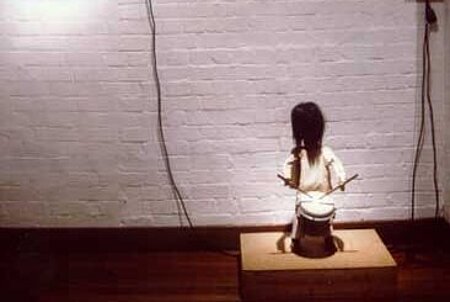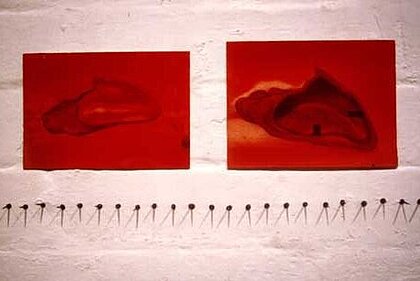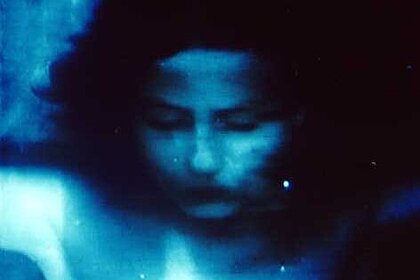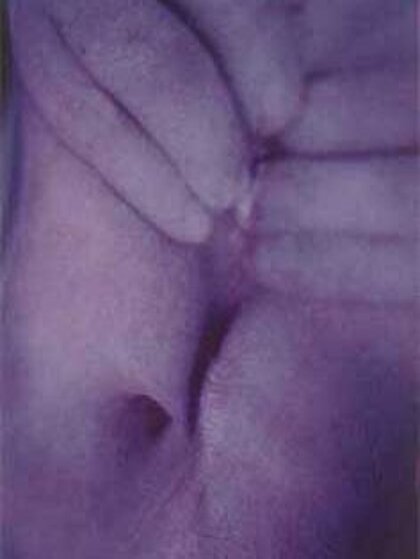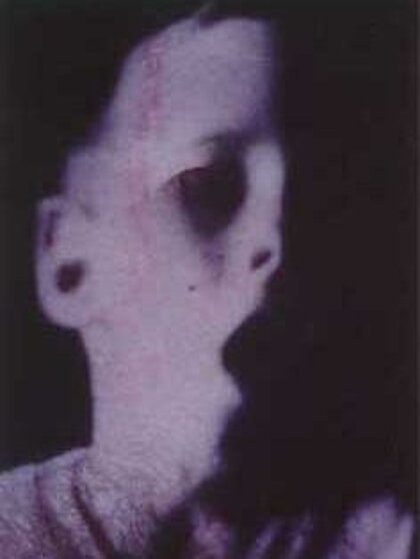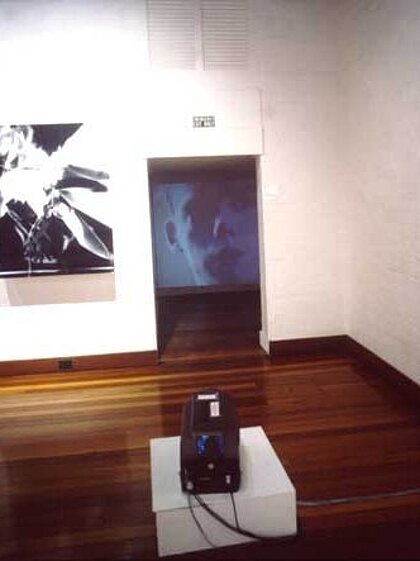It's a matter of discovering the art of a continent - just like there are always local scenes in Los Angeles and New York that attract international attention, a group of artists has evolved in Australia - from Tracey Moffatt to Gordon Bennett - that is regarded internationally with great interest. Comparable to the young British art scene of "Sensation" (Berlin) or "Emotion" (Hamburg), the Neue Galerie Graz is now organising an exhibition providing a first insight into and synopsis of the Australian art scene that is enjoying such a great success in the Western world, comparable to the success of the Australian film industry of Peter Weir (The Last Wave, Dead Poets Society, The Truman Show) or Jane Campion (The Piano) or the Mad Max trilogy starring Mel Gibson.
"Telling Tales" is an exhibition of Australian artists on the subject of memory / trauma / repression / collective memory, about the way we deal with our personal pasts and the history of a nation. Australia sees itself faced with a collective and individual trauma stemming from its history and the way it dealt with the aborigines. The exhibition does not focus on objects of the past but rather directly explores the process of memory. The artists take up the challenge of investigating into the personal traumas of their childhoods and the collective repression of the colonial history of their country.
Sigmund Freud founded psychoanalysis in 1895, writing "The Interpretation of Dreams" (1900) and "Jokes and their Relation to the Unconscious" (1905) as a consequence. The function of the joke, like the dream, is to articulate in a transposed, condensed way repressed ideas encountering resistance of the superego, according to the linguistic principles of metonymy and metaphor. One of the most popular topoi of jokes that even today still hits on a sensitive point of Austrian identity that has been badly damaged and injured since the collapse of the Austro-Hungarian monarchy in 1918 is the fact that Austria is often confused with Australia. In view of the fact that Australia is also know by another name - "down under" - Austrians feel this mix-up to be pejorative. The truth that Austria wishes to conceal from itself becomes transparent in this joke, in this projection, i.e. the fact that Austria really is peripheral and "down under" in the hierarchy of nations. The traumatic experience of the collapse of the Austro-Hungarian empire is retold in a joke, a story that both unmasks and obfuscates. In an unfinished novel, held by many to be equal to the works of James Joyce and Marcel Proust, Robert Musil told the tale of this Kakania, as he named the Austro-Hungarian empire that was to be Austria, telling the story of a dramatic loss of Austrian identity in a novel appropriately entitled "The Man Without Qualities" (1930-34). A contemporary author, Robert Menasse,has hence termed Austria "The Land Without Qualities" (1992). Amnesia regarding its history in the period between the wars and the Third Reich was the result of these processes of repression that became known internationally as the Waldheim effect.
The fate of this lack of identity, which is in my opinion a post-colonial effect, both of the colonizer and the colonized - see also the writings of Fernando Pessoa to Franz Fanon, in which the authors deal with the multiple, antinomic identities of Portugal and Algeria - is connected with the fate of modernism in these countries whose development has been vehemently arrested for decades. One of the most important Austrian artists, Günther Brus, a member of the Viennese "Aktionisten", whose actions in the sixties uncovered the trauma of Austro-fascism and its continuity after 1945 in the form of a reaction formation, as Freud would say, in a negatively connoted return of the repressed (the failure to clarify by fascist society was replaced by a smear campaign), drew a joke drawing in 1973 that is characteristic of this link between political amnesia, confusion of identity and cultural anti-modernism. Of course, he does not mean Australia but rather Austria and the parodied artistic practices are precisely those practices favoured by the avant-garde in Austria at that time. One equally revealing and apposite fact is that this is an exhibition for Big Brother Germany which is perhaps comparable to the role of England for Australia.
So there are multifarious striking, strange and selected affinities between Austria and Australia, beyond the realm of the phonetic and the artistic (e.g. the excellent achievements of both countries in the field of body art, performance and media art). This is the reason for my interest in this exhibition. Australia, in its hesitant reappraisal of its past, could assume the function of being a mirror for Austria. In accordance with the logic of the joke and the unconscious, as demonstrated in Brus' drawing, what Austria has repressed could reemerge in the name of Australia. "Telling Tales" would then tell tales of Austria and not of Australia. My interest in taking charge of this exhibition is thus of a cultural, political and psychoanalytical nature and has nothing to do with the vulgar exhibitions with titles such as "Young art from England" or "Eight artists from Europe" or "Art from Scandinavia", etc. pursuing reactionary geopolitics.
Another reason for the relevance of this exhibition is the international trend of the avant-garde dealing with new forms of narration at the close of the nineties with the aim of evading the art historical tie between abstraction and figuration, the two primary rivalling movements of the art of the twentieth century. The narrative possibilities particularly offered by the media (from photography to film, from video to computer-aided installation) are used in the service of a return of the real. The differentiation refers not only to the artistic methodology, but also to the conception of the real itself. Reality is not seen as a mimetic conception of the visible, but rather focuses above all on the repressed invisible, on the fictitious part in the construction of reality, on memory and utopia as actants of the present.
Peter Weibel
Artists:
Ian Abdulla, Dennis Del Favero, Tracey Moffatt, Gordon Bennett, Deej Fabyc, Jill Orr, Pat Brassington Julie Gough, Mike Parr, Anne Brennan, Louise Hearman, Catherine Truman, Jon Cattapan, Justin Kramer, Ken Unsworth
Catalogue:
Telling Tales, The University of New South Wales (ed.), texts by Jill Bennett, Jackie Dunn, Nick Waterlow, Peter Weibel, 64 p., engl./german, ISBN 0733404561.





















